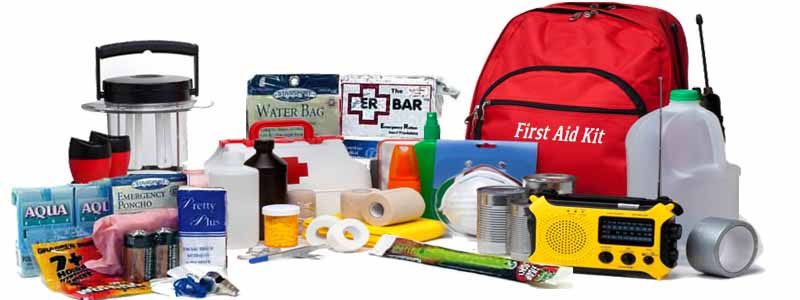How to Prepare Your Medical Kit for Natural Disasters
Lately it seems as if we cannot turn on the TV without hearing about a natural disaster. To many there appears to be a huge increase in natural disasters happening across the world and at home, and they could be correct. According to NOAA or the National Oceanic and Atmospheric Administration, in 2017 the US had sixteen separate billion-dollar natural disasters. This massive surge of natural disasters and the final cost, totaling over 300 billion for recovery and relief, has given the year 2017 the record for amassed damage in the US. 2017 has proven to be an extremely destructive year, and we still cannot predict what the years ahead may bring.
The upsurge in these catastrophic disasters only goes to show us that we have to be prepared for the worst at all times. Emergency management will be vital. We will have to quickly and properly stay organized and delegate resources to deal with humanitarian needs. Unfortunately, there are many states that do not have any long-term recovery plans in place. This will leave many first responders and emergency personnel scrambling to find the best ways to care for communities. For many EMS workers, if there is no long-term recovery plans in place, the recovery plan will end when they have rescued as many people as they possibly can. The best way to be prepared during a natural disaster is to have a well-stocked emergency medical kit tailored especially for natural disasters.
As first responders and leaders of our community, we should urge and inform our citizens of what they should have in their emergency medical kit. These kits can not only help our citizens gain a little peace of mind during a highly stressful and hectic event, but they can come in handy during these trying times. These kits can provide crucial support during a time when there are too few first responders to render aid or help evacuate those affected by a disaster, when there may be too few ambulances or emergency vehicles to swiftly come to your aide or if your location is cut off from the mainland. You never know how long it will take for help to reach you, so you will need to be prepared by having a fully stocked emergency medical kit. The CDC or Center for Disease Control has a detailed list of essential items for your emergency medical kit. Here is a look at the list of items recommended by the CDC:
- Water. You will need approximately one gallon of water per person per day
- Food. We suggest food items that are nonperishable and easy to prepare because no electricity may be available
- A flashlight
- A radio that is powered by batteries or a hand crank. A NOAA weather radio would be preferred
- Extra batteries
- 7 day supply of any necessary medications
- Medical paperwork such as a medication list and any other necessary medical information
- First aid kit
- Emergency blankets
- Sanitation and personal hygiene items
- Multipurpose tool, such as a Swiss army knife
- Manual can opener
- Copies of personal documents, for example birth certificate, passport, proof of address, deed to your home and insurance policies
- Maps of the local area
- Family and emergency contact information
- Cell phone and charger
- Extra cash- not a credit or debit card
- Extra set of car and house keys
- Essential mortuary supplies
There is no way to be completely prepared for everything that may happen during and after a natural disaster. However, if you have a properly stocked emergency medical kit, you should be prepared for a lot of the situations that may arise due to a natural disaster. And, we all know it is better to be prepared for what may come than to be unprepared and leave our survival and well-being up to chance. So, stay safe and stock your emergency medical kit ahead of time.

